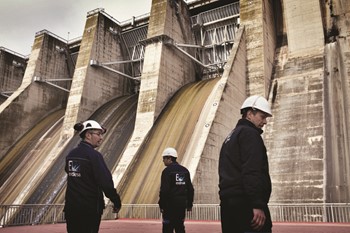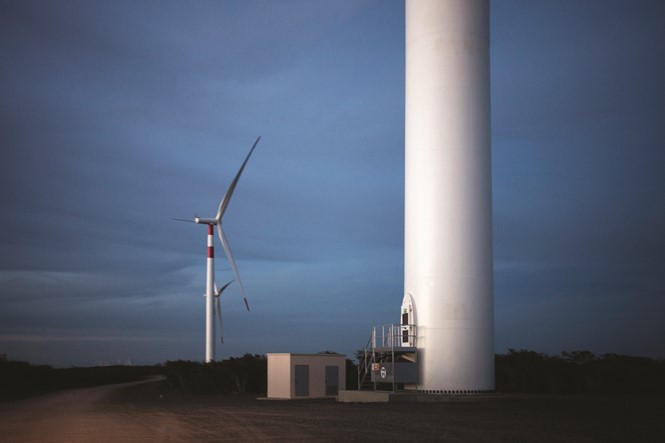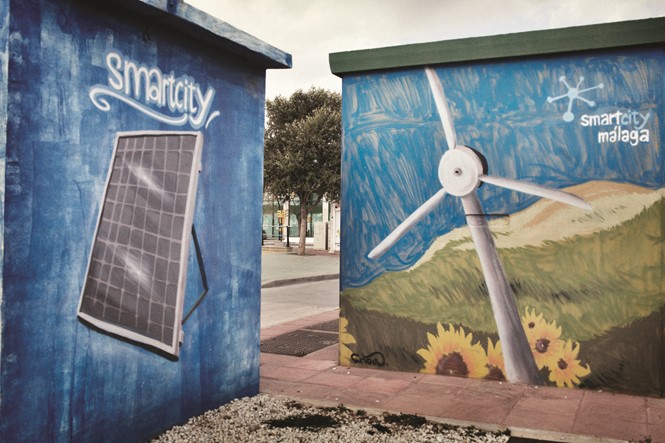Sustainable futures: Enel Group
Renewable energy is no longer the dream of environmentalists, but a real and growing source of fuel provided by the world’s leading energy companies. Amy Sandys reports on Enel Group’s renewables expansion and branding strategy
The practice of sustainable energy has been in place for hundreds, if not thousands, of years. In 200 BC, Europeans had begun to harness hydropower through the use of waterwheels, which were able to carry out industrial processes such as grain crushing. By 10 AD, there is evidence that vertical windmills in the Persia region harnessed wind energy to pump water and irrigate crops.
Windmills are now generally unnecessary to ensure sufficient food production, but they serve the purpose of harnessing natural resources to produce a continuous and effective energy supply remains paramount. In an age in which science is able to predict the potentially disastrous effects of fossil fuel overconsumption, finding alternative solutions based on what the natural environment can offer is of increasing concern to energy corporations.
The business sector increasingly wields a monopoly on the implementation of effective social and environmental change. As a result, corporate social responsibility has become a huge consideration for those looking to invest, as well as impacting the willingness of customer to buy into a service. Italy-based energy provider Enel Group is a corporate brand centred around creating and sustaining partnerships to better introduce the benefits of a sustainable energy mix into the world. In 2012, 42% of its electricity production was at zero emissions – testament to the geographical and technological diversity on which the corporation operates.
Enel recently underwent a rebrand, by international consultancy Wolff Olins, that focuses the company on its promise of ‘Open Power,’ allowing it to use its technological expertise and reach to incorporate new methods of creating and distributing energy.
Enel is a leader among the growing number of international providers seeking alternative solutions to more traditional methods of energy supply. It aims to ensure its 1.9m kilometres of grid network, rolled out across 21 different countries, has a positive impact through sourcing and diversification of a mixed approach to energy provision. Enel also provides electricity to remote communities along with educational programmes designed to aid in the alleviation of poverty.
On the environmental side, Enel Group has a variety of sustainability programmes ranging from Europe, to Africa, South America and beyond. Enel Green Power (EGP), the arm of the corporation dedicated solely to renewable energy production, has become Italy’s largest renewable energy company. By focusing on the supply and value chains, EGP is concerned with promoting sustainability in business as well as encouraging a greener future of energy.


“Renewable energy can be competitive with traditional generation even in geographies where its development is still in the early stages. Renewables provide diversification in a country’s energy mix”
EGP is set, by 2018, to become the biggest energy provider in Peru by securing the rights to supply energy to three power stations at an investment of approximately $400m. Comprised of a wind farm, solar park and hydropower station, EGP ensures that the importance of diversifying away from non-renewable energy sources is not a practice confined to the European market. Indeed, South America’s climate lends itself perfectly, allowing EGP’s investment to potentially mitigate Peruvian emissions, despite the economic monopoly held by the country’s mining industry. Teaching future generations about the importance of sustaining a mixture of energy sources will be particularly pertinent in a region with the potential to effectively harness both solar and wind energy.
EGP CEO Francesco Venturini, said in a press release, “This tender marks Enel Green Power’s entrance into Peru, confirming the success of our growth strategy in Latin America. These results also illustrate how renewable energy can be competitive with traditional generation even in geographies where its development is still in the early stages. Renewables provide diversification in a country’s energy mix, making the energy system more resilient and better focused on addressing the challenges posed by climate change.”
However, EGP’s foray into the South American renewable energy market is not limited only to Peru. The construction of 1.7 megawatt solar photovoltaic plant La Silla near the Coquimbo region of northern Chile is the first of its kind of provide continuous clean energy to the neighbouring astronomical observatory as well as around 2,000 homes. The application of new technologies ensure panels will continue to function even if compromised by other technical faults.
“We are very pleased to have begun work on a second highly innovative project in Chile, following the inauguration of the very successful Ollague hybrid facility,” said Venturini. “With La Silla, our continuous innovation in renewable energy technology will provide another example of excellence in clean energy generation, underscoring how sustainability and innovation must go hand in hand.”
Beyond direct investment into energy resource initiatives, Enel is also at the forefront of displaying the message of sustainable energy to its investors.
Enel’s latest rebranding strategy aims to open the company to a wider range of markets and environments. Developed and named around the concept of openness in sustainable power provision, the Open Power rebrand reflects its accessibility to the global energy markets, while affirming brand commitment to the use of renewables. A colour palette of pinks, blues, reds and green aim reflect the electric light spectrum; energy itself is a notion running through its typeface as well as the visual design. Enel has thus ensured its brand identity communicates its forward-thinking concepts, moving away from traditional depictions of energy usage to promote its cause in environmental sustainability.
The value of Enel’s environmental positioining lies in its ability to challenge people’s perceptions of a conventional energy corporation, while actively challenging the market to develop a better energy mix. With EGP set to integrate into Enel by the end of March, the corporation can scale its commitment to investing in renewable energy while remaining committed to the dynamic, innovative approach to energy its rebrand sets out to convey.
















